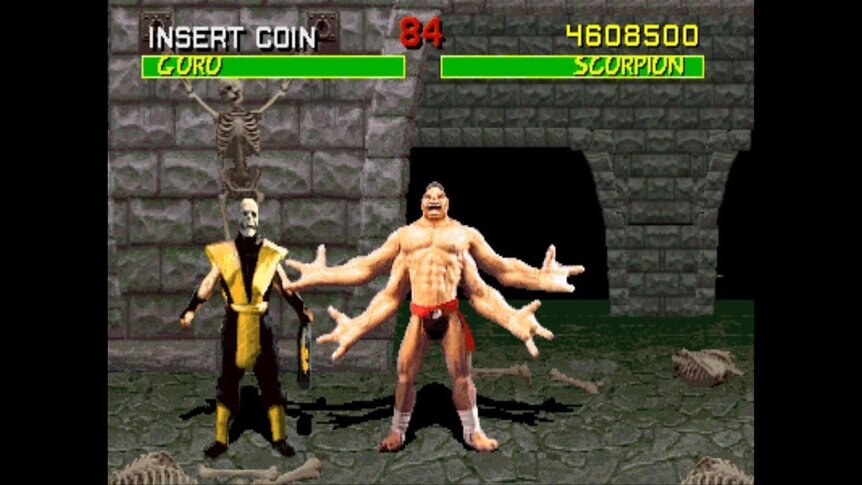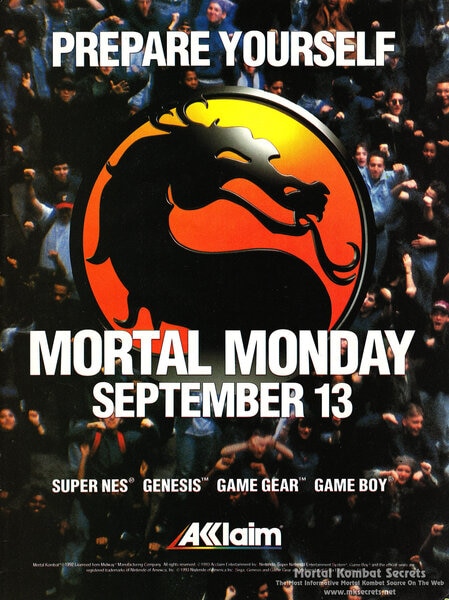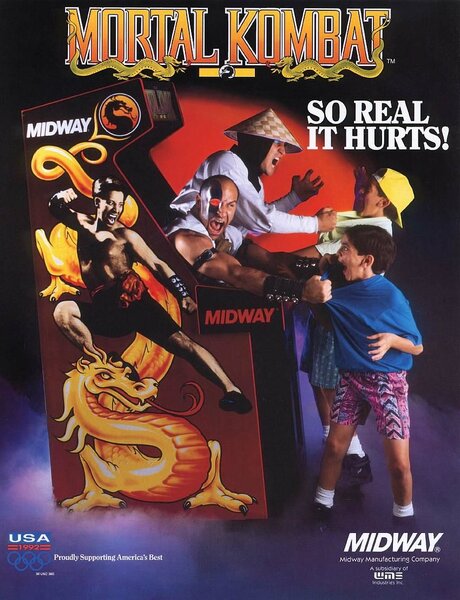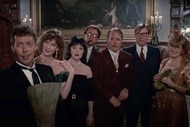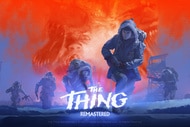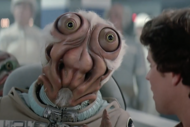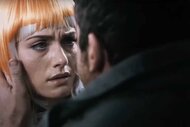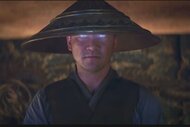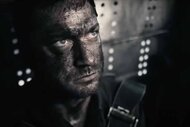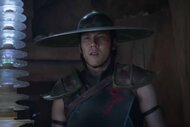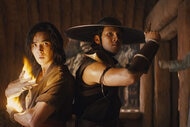Create a free profile to get unlimited access to exclusive videos, sweepstakes, and more!
How Mortal Kombat's Super Nintendo debut changed video games forever
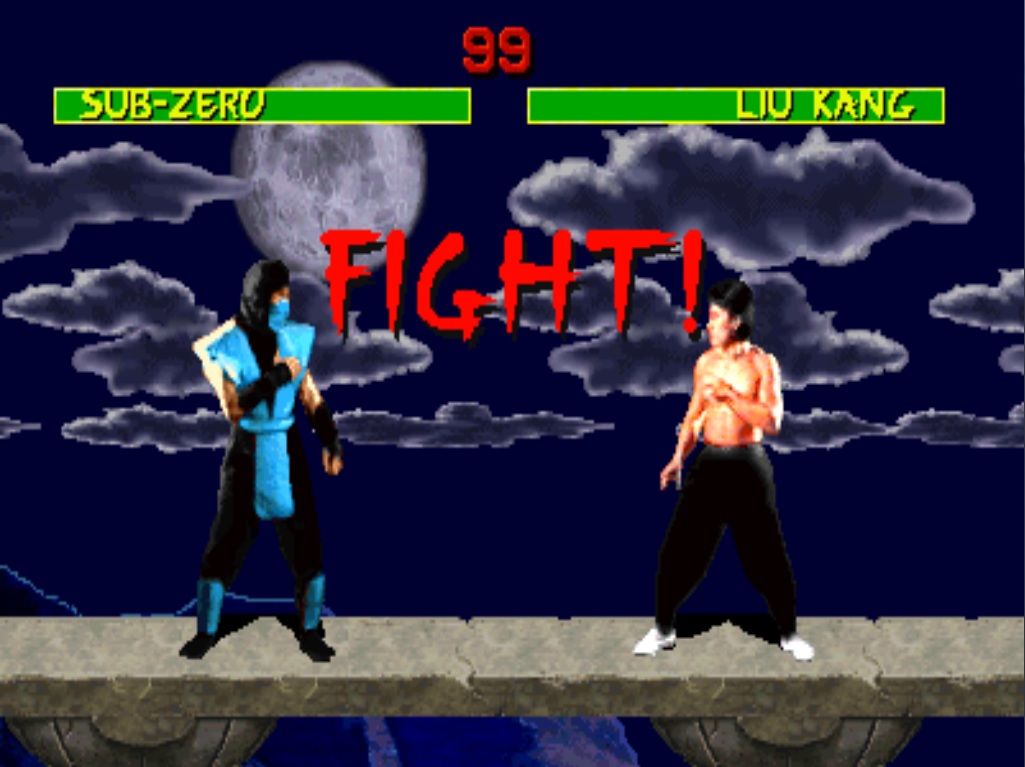
When Mortal Kombat first rolled into arcades in 1992, it blew gamers' minds. Not only were the mysterious digitized fighters incredibly lifelike, but the action felt real as well. Blood spilled from characters like Liu Kang, Sonya, and Sub-Zero while uppercuts and roundhouse kicks knocked them across the screen. Then there were the fatalities. Kano ripped out Raiden's heart! Johnny Cage tore Scorpion in half! No one had ever put such graphic, gory detail into video games and kids went crazy for it. It also drove parents crazy, in a very different way.
Up until that point, mainstream video games on systems like Nintendo, Sega, and Turbo Graphix had been relatively milquetoast. Fighting games like Street Fighter II had just become popular but, for the most part, games that featured violence or gore like Chiller, Dracula, and Jack the Ripper had been obscure PC releases. In 1988, several systems ported the gory button masher Splatterhouse, but that was only after major tweaks. Most developers simply shied away from anything too graphic or bloody.
Mortal Kombat changed all of that. In addition to changing the way video games were made, it, alongside games like Doom, Lethal Enforcers, and Night Trap, was a catalyst for how video games were marketed and eventually rated.
By the time Midway released Mortal Kombat into arcades, home video game consoles had entered the 16-bit era and the Super Nintendo and Sega Genesis were better suited to handle ports of arcade favorites like Golden Axe, Altered Beast and Street Fighter II. As the graphics capabilities progressed, developers were able to add small details to the onscreen sprites, allowing for a more immersive experience. For kids who had grown up playing Pong on Atari and Kid Icarus on the 8-bit NES, having access to arcade games at home was revolutionary.
At the same time, parents were beginning to take notice of the arcade game that let you actually kill your opponent after beating him or her to a pulp. According to former Midway developer and Mortal Kombat co-creator Ed Boon, the main characters were all caricatures of some of their favorite characters from martial arts and sci-fi movies: Kano, with his infra-red eye, was based on Arnold Schwarzenegger's make-up in The Terminator. Liu Kang was Bruce Lee. Raiden, the electric God of thunder, was based on the lightning-wielding demon from Big Trouble in Little China and Johnny Cage was based on actor Jean-Claude Van Damme.
As the uproar grew, Sega quietly prepared to port Mortal Kombat to the Genesis and Game Gear, while Nintendo worked to do the same for the NES and Gameboy systems. The game was too much of a sure hit to ignore. But that guaranteed financial windfall brought an important and risky calculation: whether to censor the game on their platforms.
In the summer of 1993, then-Nintendo executive Howard Lincoln met with the head of Acclaim to go over options. Nintendo had built its brand on family entertainment and cute characters like Yoshi. On the opposite end of the spectrum, Mortal Kombat was, at the time, the most violent video game ever released. Hoping to appease fans and their parents, Lincoln called for the blood's color to be changed from red to green. (Eventually, it was changed to grey sweat.) The Nintendo version also cut down and changed Fatalities for Raiden, Sub-Zero and Johnny Cage.
Other censored moments include Raiden burning his opponent to ashes instead of making his head explode and Sub-Zero deep-freezing his enemy and then breaking him instead of pulling out his spine. Nintendo went as far as changing Sub-Zero's ending in the game. In the SNES version, his purpose for entering the tournament "destruction," rather than his original goal of "assassination."
In an interview with MEL Magazine, Jeff Peters, Project Director of Mortal Kombat for Sculptured Software, said the developers' hands were tied when it came to Nintendo's stance on gore.
"We did the best we could to make the best game possible within the rules and constraints we were given," Peters said. "Still, everyone believed the sweat and altered fatalities actually hurt sales on the SNES. If you wanted the gore, you bought the Sega version. If you wanted the better playing and looking game, you bought the SNES. As a consumer, those were your main decision points."
Sega, meanwhile, had their cake and ate it too. When you started up the game on the Sega Genesis, you were initially given the censored version with no blood or extra-gory fatalities. Soon though, word spread that a simple cheat code could unlock the full game.
On Sep. 13, 1993, dubbed "Mortal Monday," gamers lined up to purchase the home version of Mortal Kombat. Over the first month, Acclaim sold more than a million cartridges. In the end, Lincoln's move to censor the Nintendo versions backfired as the Sega Genesis version of Mortal Kombat outsold the Super Nintendo version five to one.
According to a GamePro article on Mortal Monday from November of 1993, Acclaim announced that they had shipped more than three million copies of Mortal Kombat, counting the SNES, Genesis, Game Boy, and Game Gear versions combined. A review of the game a few months prior foreshadowed the smash hit.
"Genesis owners will be taunting SNES owners with their cry of 'No guts, no gory' when they get their hands on this brutal beat-em-up," GamePro's initial review read. "Although the graphics don't quite live up to those on the SNES, the great gameplay and better control combined with the special Mode A [enabling blood] option make the Genesis cart a winner."
Additionally, the game's success spawned a rash of copycats. From Primal Rage to Way of the Warrior (remember the 3DO?), to Sega's Eternal Champions, the race to see who could come up with the coolest, most gruesome finishing move began. By the end of 1993, as Mortal Kombat II was entering into arcades across America, another fight was brewing… in Washington DC.
After the son of a former chief of staff to Senator Joe Lieberman showed him Mortal Kombat, the Connecticut politician decided to lead the charge against violent video games. In 1993, Congress held a series of hearings on regulating video games. In short, the hearings didn't go well for Nintendo or Sega and after the sessions, Lieberman pushed for a Video Game Ratings Act in 1994.
In their book Dungeons and Dreamers, Brad King and John Borland claim both video game companies pointed the finger at the other during the hearings. Nintendo went as far as attacking Sega for its release of violent games, Borland wrote.
"In response, the Sega representative pulled out a prop — a bazooka-style gun accessory used by some Nintendo games — and asked if that was the appropriate means to teach nonviolence to children," Borland and King wrote.
Seeing the writing on the wall, companies including Capcom, Electronic Arts, Konami, Microsoft, Bandai Namco Entertainment, Nintendo, Sony Interactive Entertainment, and Square Enix banded together to establish a rating system for video games. Forming the Interactive Digital Software Association (IDSA), they created the Entertainment Software Ratings Board (ESRB), which led to the standardized rating approach to video games you can now find on almost every game. The IDSA later morphed into the Entertainment Software Association.
Video games now have ratings of "Early Childhood" and "Everyone" to "Mature" and "Adults Only 18+," but also provide advertising guidelines for how particular games should be marketed through media channels.
The legislation was hardly a fatality for the Mortal Kombat franchise. In 2016, Mortal Kombat was a finalist for the Video Game Hall of Fame. And, more than 25 years after the game was first ported to a Nintendo system, you can immediately download the newest version of Mortal Kombat, one of the most violent video games ever created onto the Switch, one of the most kid-friendly consoles ever created.
